Ungidaek House (인심좋은웅기댁)
13.2Km 2024-08-01
32 , Gaesil 1-gil, Goryeong-gun, Gyeongsangbuk-do
+82-54-956-4022, +82-10-3207-4022
Generous Unggi House is a clay-walled hanok guest house in Gaesil Village, Gyeongsangbuk-do - hometown of the descendants of Joseon scholar Kim Jong-jik. Guest rooms have toilets and cooking facilities. Behind the house rises Hwagae Mountain, Jeomubong Peak and a 350-year-old bamboo forest. Visitors can experience traditional farming (planting rice and digging sweet potatoes) and traditional craft skills such as kite making and straw weaving; as well as making taffy and sweet rice cake, catching mudfish and ice sledding.
The House of Soccer kkumnamu (Future Soccer Player) (축구꿈나무집)
13.2Km 2024-08-05
35 , Gaesil 1-gil, Goryeong-gun, Gyeongsangbuk-do
+82-54-956-4022, +82-10-3207-4022
Dreams of Football Timberhouse is a hanok guest house in Gaesil Village, Gyeongsangbuk-do - hometown of the descendants of Joseon scholar Kim Jong-jik. The guesthouse has 2/3 rooms and a lawn; and one of the rooms has barbecue facilities outside. In the village, visitors can experience traditional farming (planting rice and digging sweet potatoes) and traditional craft skills such as kite making and straw weaving; as well as making taffy and sweet rice cake, catching mudfish and ice sledding.
Lang Studio (랑 스튜디오)
13.3Km 2024-08-01
37 , Gaesil 1-gil, Goryeong-gun, Gyeongsangbuk-do
+82-54-956-4022, +82-10-3207-4022
Rang Studio is a white-painted hanok guesthouse in Gaesil Village, Goryeong, Gyeongsangbuk-do - hometown of the descendants of Joseon scholar Kim Jong-jik. The guestroom is equipped with a bathroom plus a kitchen with cooking utensils provided. Therfe is an outdoor barbecue, but visitors should bring their own charcoal. In the village, visitors can experience the atmosphere of the old countryside, sampling traditional farming and craft skills plus traditional pastimes and food.
Yeonpung Gotaek (연풍고택(문충고가))
13.3Km 2024-08-01
44 , Gaesil 1-gil, Goryeong-gun, Gyeongsangbuk-do
+82-54-956-4022, +82-10-3207-4022
Yeonpung Old House is a 150-year-old house in Gaesil Village, Goryeong, Gyeongsangbuk-do - hometown of the descendants of Joseon scholar Kim Jong-jik. Behind the house stands a bamboo forest, making the air fresh and clean. There are four guestrooms, two of which - Juksil and Maesil (‘Bamboo’ and ‘Plum’) - are larger and suitable for groups. The kitchen is in a separate building, and has a large yard with barbecue facilities, which is also used for village feasts. In the village, visitors can experience the atmosphere of the old countryside, sampling traditional farming and craft skills plus traditional pastimes and food.
Seokjeongdaek House (석정댁)
13.3Km 2024-08-01
6 , Gaesil 2-gil, Goryeong-gun, Gyeongsangbuk-do
+82-54-956-4022, +82-10-3207-4022
Seokjeongdaek is a hanok guest house in Gaesil Village, Goryeong, Gyeongsangbuk-do - hometown of the descendants of Joseon scholar Kim Jong-jik. It consists of two guestrooms plus one living room and kitchen, making it ideal for families and groups. The rooms have air conditioning and cooking facilities, and outdoor barbecues are also available. In the village, visitors can experience the atmosphere of the old countryside, sampling traditional farming and craft skills plus traditional pastimes and food.
Chuwoojae House (추우재)
13.3Km 2024-08-05
20-1 , Gaesil 2-gil, Goryeong-gun, Gyeongsangbuk-do
+82-54-956-4022, +82-10-3207-4022
Chuwoojae is a hanok stay in the middle of Gaesil Village, Gyeongsangbuk-do - hometown of the descendants of Joseon scholar Kim Jong-jik. There are two buildings in the hanok - a main building and a sarangchae (men’s room) - which can be booked separately; both are equipped with toilet, bathroom and kitchen facilities. The main building contains a traditional ondol furnace room which residents can see at work. There is a parking space not far from the accommodation.
Hadongdaek House (하동댁)
13.3Km 2024-08-01
45 , Gaesil 2-gil, Goryeong-gun, Gyeongsangbuk-do
+82-54-956-4022, +82-10-3207-4022
Gaesil Village in Goryeong-gun, Gyeongsangbuk-do, is the hometown of descendants of Joseon politician Kim Jongjik, and offers visitors old-time village experiences such as hanok stay, farming, and traditional etiquette and games - all overseen by the Gaesil Village Farming Association. Hadong House is a cozy hanok guesthouse with a well-maintained garden, offering two rooms: Maeshil (‘Plum’) has its own inside kitchen and toilet, while Jukshil (‘Bamboo’) has an outside kitchen and shared toilet.
Gaesil Village (개실마을)
13.4Km 2021-04-09
29, Gaesil 1-gil, Goryeong-gun, Gyeongsangbuk-do
+82-54-956-4022
Gaesil Village has preserved the traditional living-style of the past with mud walls along the streets, community well, hanok and more. Convenient facilities such as a water and sewage system, senior citizen center, and the village hall as well as internet café and walking trail make living in the village more pleasant. The village fields grow all sorts of produce such as mushrooms, chives, cucumbers, and more. Visitors to the village can experience traditional culture as well as food and activities through one of the many cultural programs offered throughout the village.
Deokdongdaek House (덕동댁)
13.4Km 2024-08-01
39 , Gaesil 2-gil, Goryeong-gun, Gyeongsangbuk-do
+82-54-956-4022, +82-10-3207-4022
Deokdong House is an elegant hanok standing in Gaesil Village, Gyeongsangbuk-do - hometown of the descendants of Joseon scholar Kim Jong-jik. The hanok’s large wooden gate opens onto a grassy courtyard. There are two guestrooms: Maeshil and Jukshil (‘Plum’ and ‘Bamboo’), the latter of which has cooking facilities and also an outdoor barbecue. In the village, visitors can experience traditional farming (planting rice and digging sweet potatoes) and traditional craft skills such as kite making and straw weaving; as well as making taffy and sweet rice cake, catching mudfish and ice sledding.
Santokki Park (산토끼 노래동산)
13.9Km 2023-06-27
623 , Ibang-ro, Changnyeong-gun, Gyeongsangnam-do
+82-0507-1352-1401
Santokki Park is a recreational space located behind Ibang Elementary School in Changnyeong-gun. The park was inspired by the children's song "Santokki," meaning mountain rabbit, composed and written by Lee Il-lae who was a staff at Ibang Elementary School. The park comprises a variety of things to do and see related to rabbits, including a rabbit village, rabbit cave, and rabbit feeding experience. There are also spaces dedicated to Lee Il-lae, his work, and small animals. The park is kids-friendly with recreational places where children can freely run around as well as other amenities that help visitors rest and relax.
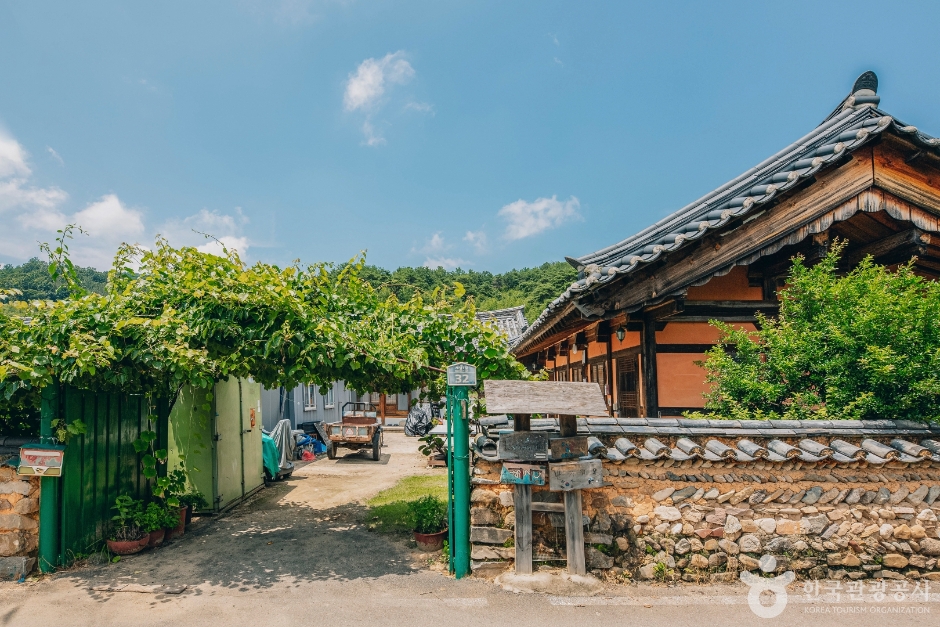
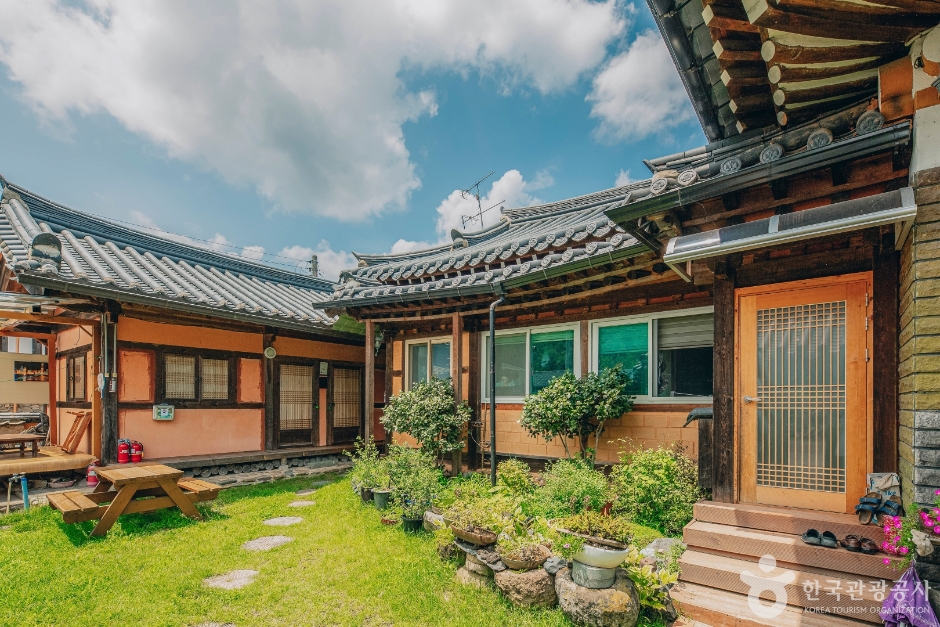

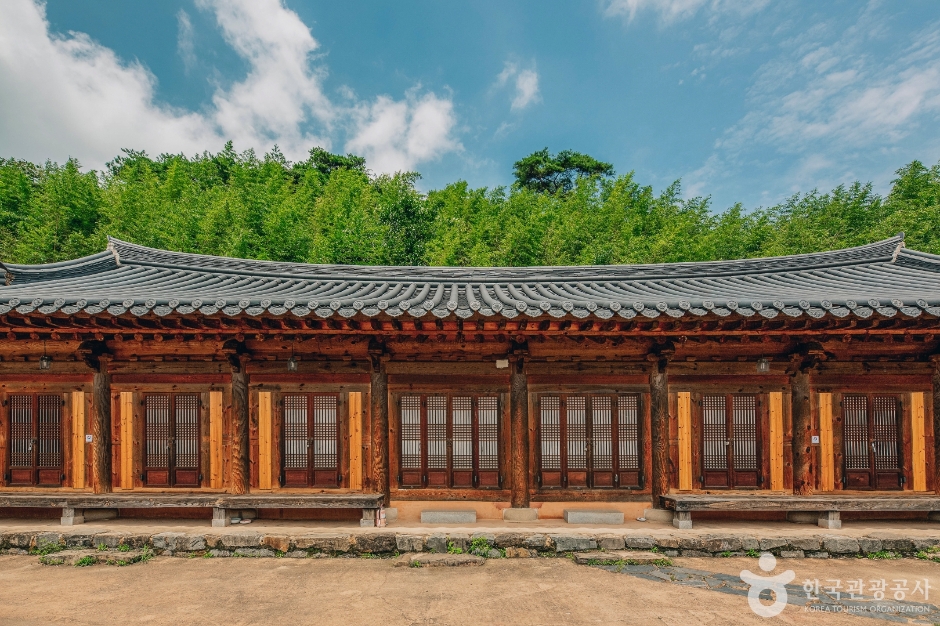
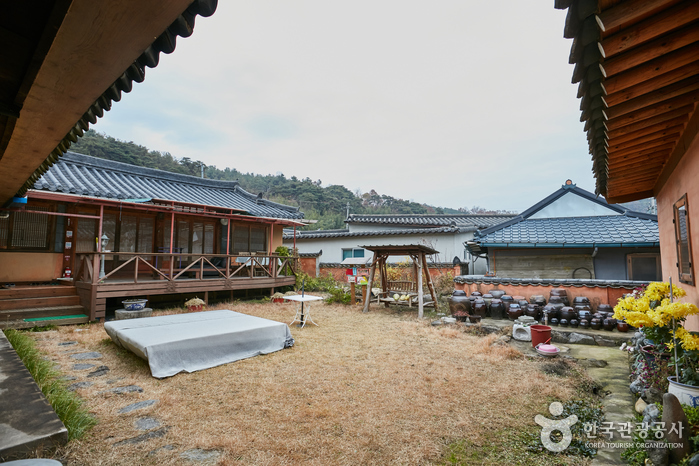
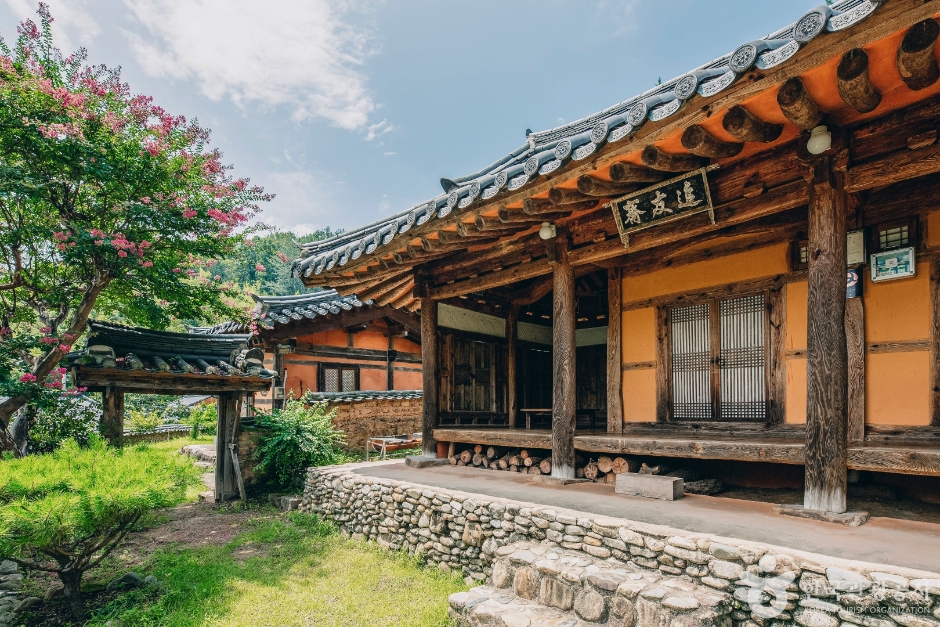
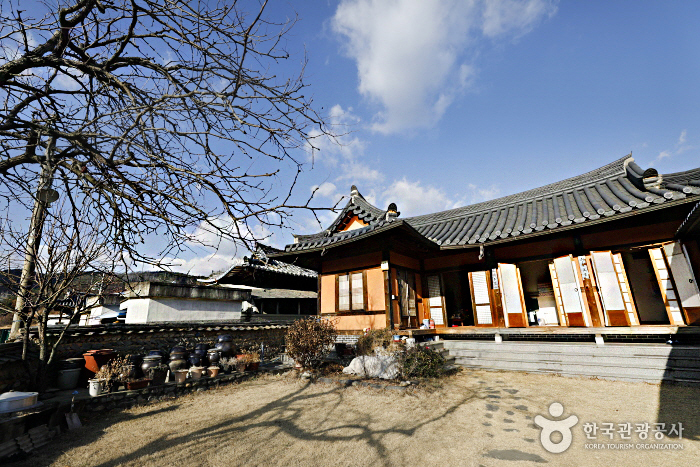
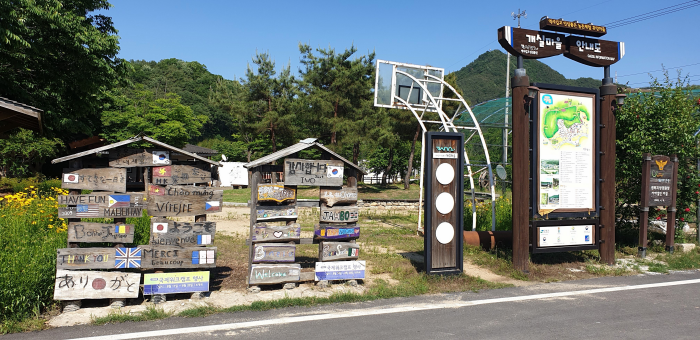
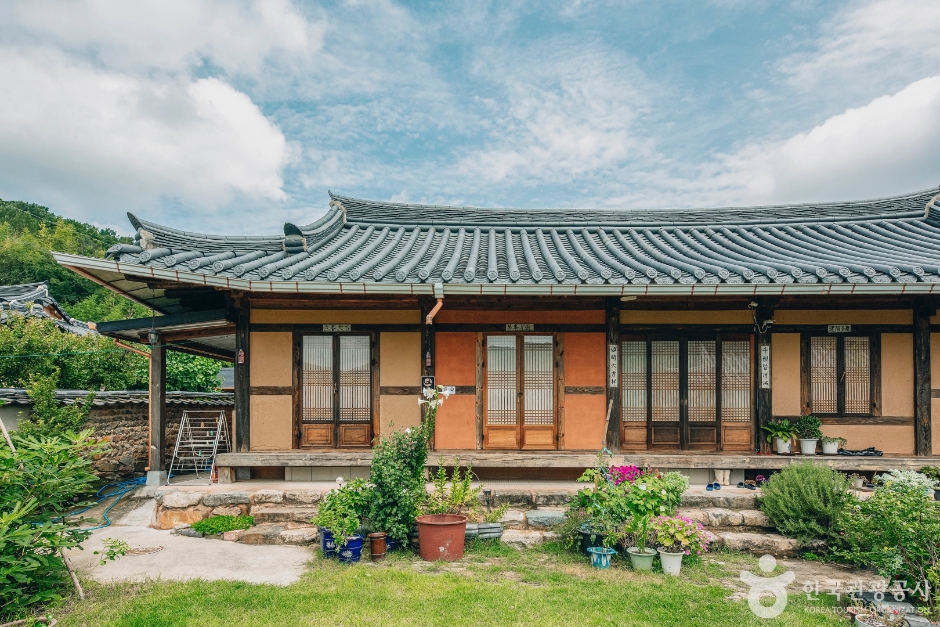
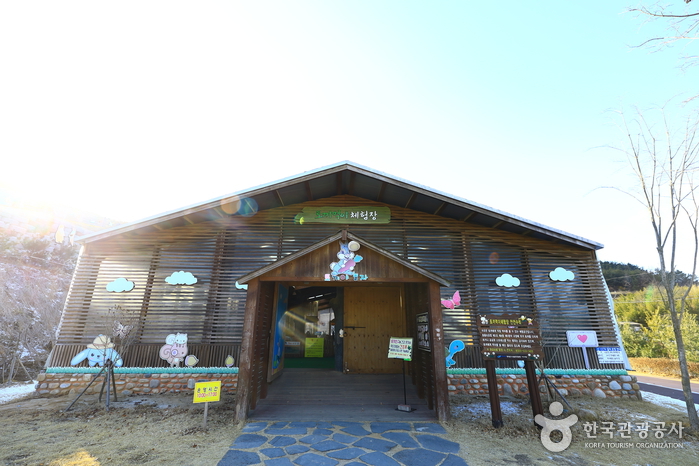
 English
English
 한국어
한국어 日本語
日本語 中文(简体)
中文(简体) Deutsch
Deutsch Français
Français Español
Español Русский
Русский